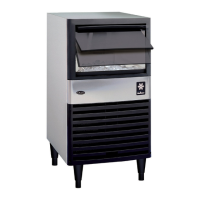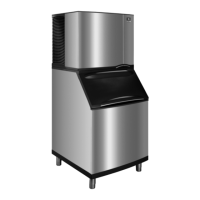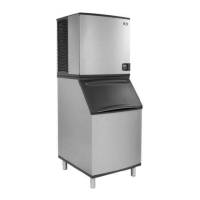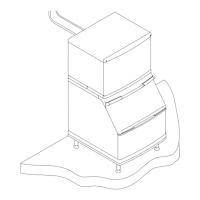54 Part Number STH039 8/13
ICE FORMATION PATTERN
Evaporator ice formation pattern analysis is helpful in
ice machine diagnostics.
Analyzing the ice formation pattern alone cannot
diagnose an ice machine malfunction. However, when
this analysis is used along with Manitowoc’s
Refrigeration System Operational Analysis Table, it
can help diagnose an ice machine malfunction.
Any number of problems can cause improper ice
formation.
Example: An ice formation that is “extremely thin at the
outlet” could be caused by a hot water supply, water
leaking out the overflow pipe, a faulty water float valve,
a low refrigerant charge, etc.
Examples of Evaporator Tubing Routing
Normal Ice Formation
Ice forms across the entire evaporator surface.
At the beginning of the Freeze cycle, it may appear
that more ice is forming on the inlet of the evaporator
than at the outlet. At the end of the Freeze cycle, ice
formation at the outlet will be close to, or just a bit
thinner than, ice formation at the inlet. The dimples in
the cubes at the outlet of the evaporator may be more
pronounced than those at the inlet. This is normal.
If ice forms uniformly across the evaporator surface,
but does not do so in the proper amount of time, this is
still considered a normal ice fill pattern.
